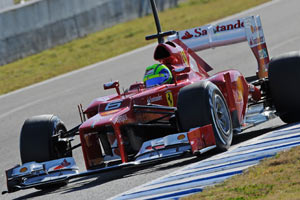xpensive wrote:donskar wrote:This is a forum about the car, I believe? Anyone care to stop name calling and conspiracy debunking and hazard a guess at what changes can be effected in the three weeks until China? I should think intense work in the tunnel could lead to SOME improvements (?)
Again, on a drying track, Alonso lost a second per lap to a Sauber, this discloses the situation crystal clear me thinks?
The problem is a little more fundamental than position of xhaust and the need for some aerodynamic tweaks I'm afraid.
Who knows, pussyfooting around in those monsoon-conditions might have hit some sweetspot of that front suspension?
FFS it's not the front suspension!
Driving on the wet / drying track would have been cancelling out a lot of the exhaust blowing as the cars are off throttle for so much longer. The car was also really good during the early stages of the inters during that penultimate stint.
You know what that points to? Aero.
The inters and wets are larger tyres than the drys to lift the cars to a greater ride height. This does affect the aero performance of the car quite significantly. The 2008 Torro Rosso was one car that benefitted hugely from the change in aero from the larger tyres, causing it to work very very well in wet conditions. I forget who said it (think it was Brundle commentating) but it was quoted a while ago that the team never managed to work out why their aero worked so well with those tyres, but there was a subtle change in the interactions between the various components.
Ferrari seems to benefit (or loses less than the competition) from that increase in ride height and / or change in tyre profile.
Where Sauber started to reel the Ferrari back in was as the tread on those tyres started to wear bring the profile of the tyre back towards that of the slick tyres. When they changed on to slicks the Sauber was instantly quicker. That's not down to the front suspension, that's an aero issue.


